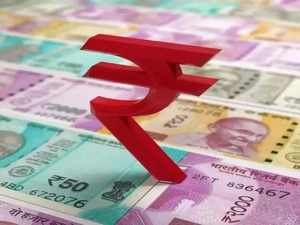Investment in Sovereign Gold Bonds (SGBs) increased sharply during COVID-impacted years as investors sought safer options amid equity market volatility, with 2020-21 and 2021-22 accounting for nearly 75% of total sales of the bonds since the scheme’s inception in November 2015.
The next tranche of SGBs will be available for purchase for five days beginning Monday. The issue price is set at $5,091 per gram of gold.
In consultation with the Reserve Bank of India, the government has offered investors who apply online a discount of 50 per gram less than the nominal value.
The payment for the application is made electronically.
It will be the first issuance of the fiscal year.
According to RBI data, the scheme has raised a total of 38,693 crore (90 tonnes of gold) since its inception in November 2015.
During the two COVID-impacted fiscal years of 2021-22 and 2020-21, investors purchased the bonds for a total of 29,040 crore, or roughly 75% of the total sales of the SGBs since their launch.
During 2021-22, the Reserve Bank issued ten tranches of SGBs totaling 12,991 crore (27 tonnes).
During 2020-21, the central bank issued 12 tranches of SGBs totaling 16,049 crores (32.35 tonnes).
Since its inception in November 2015, the scheme has raised a total of 9,652.78 crore (30.98 tonnes) in 37 tranches by the end of fiscal 2019-20.
In November 2015, the first tranche of SGBs was issued. Following that, two tranches were issued in January and March of 2016.
According to Rishad Manekia, Founder and MD of Kairos Capital, a Mumbai-based SEBI-registered investment advisory firm, SGBs can be viewed as a substitute for holding physical gold, and they also have a yield component. It has the advantage of being government-backed and simple to store.
“One thing to look out for in these instruments is the lack of liquidity and the lack of diversification. If you hold the bonds till maturity, then liquidity is not an issue. However, if you wanted to exit early, your options are much more limited,” he said.
The SGBs have an eight-year term with the option of early redemption after the fifth year.
According to Deepak Jain, CEO of TaxManager.in, SGBs are one of the safest modes of investment, providing capital appreciation and interest payments as well as a government guarantee.
“But if you are looking for aggressive returns, this is not the right investment. So as the case may be – in your investment portfolio – SGB should not be more than 5 per cent to 8 per cent of the total investments,” he said.
On the taxation of Sovereign Gold Bonds, Kunal Savani, Partner, Cyril Amarchand Mangaldas said the special tax regime provided in the Income-tax Act, 1961 for the taxation of Sovereign Gold Bonds (SGBs) had been designed to encourage and incentivise investors to hold gold in non-physical form for a long period.
“Accordingly, only gains arising from the redemption of SGBs after the expiry of the maturity period (i.e. eight years) have been exempt from tax, while gains arising from premature redemption and secondary transfers have been kept within the tax net,” he said.
The investors are compensated at a fixed rate of 2.50 percent per year on the nominal value, payable semi-annually.
Banks, the Stock Holding Corporation of India Limited (SHCIL), the Clearing Corporation of India Limited (CCIL), designated post offices, the National Stock Exchange of India Limited (NSE), and the Bombay Stock Exchange Limited all sell SGBs (BSE).
The SGB scheme was launched in November 2015 in order to reduce demand for physical gold and redirect a portion of domestic savings previously used to purchase gold into financial savings.
Source:GT







 Finance
Finance






